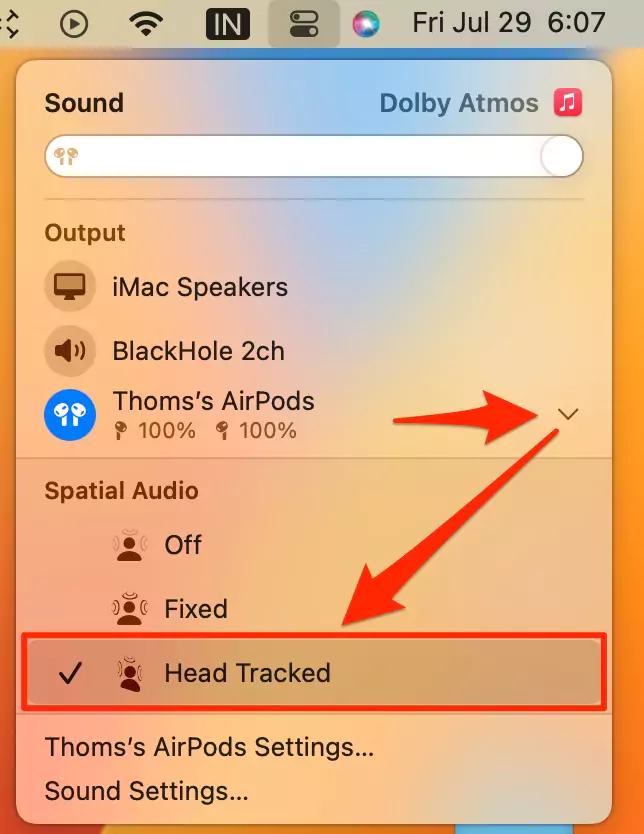In today’s ultra-mechanized world, audio technology has come a long way. Audio systems have evolved significantly. They are highly interactive and take into account the listener’s experience. The digital and experiential era began in the 1990s, and digital audio systems rapidly replaced analog systems. In the present times, we have overcome most adversities. We have access to world-class audio systems, the most recent is the Spatial Audio feature in macOS. What does the Spatial Audio Feature entail?
Apple’s Spatial Audio feature is a 3D audio technology for Apple Music and movie scores. The feature first appeared in iOS 14 in September 2020 for movies and TV shows, and then it was launched on Apple Music on June 7, 2021, at Apple’s WWDC conference. The feature has also been expanded to tvOS for use with the new Apple TV 4K with AirPods Pro and Max. Simultaneously, one can use it with Macs fueled by Apple’s latest M1 chip.
Why is Spatial Audio Not Available in MacOS?
The reasons are that you might be playing media files on unsupported apps, Browsers, or Streaming services. Which does not allow or Support airpods spatial audio. Here’s the detailed troubleshooting on Spatial audio not available on Mac [Grayed Out].
Step 1→ Connect your AirPod to Mac. and Play Spatial Audio compatible Music, TV Show, or Movie.
Step 2→ Now, Select Spatial audio sound from the Control center on Mac, Under the Sound Section > AirPods settings.
In the same way, we can also turn on airpods max spatial audio on Mac. That feel like airpods surrounds sound with High-quality audio sound. If something is not working correctly, then find what apps support spatial audio.
What makes Spatial Audio unique, and how can it be used in macOS Monterey?
The ability of spatial audio to transfer sounds from a 2D landscape to a 3D landscape is its most distinguishing feature. It enhances the spatial audio effect and surrounds sound. Your auditory senses will pick up on the direction the sound is coming from, enhancing the overall experience by a factor of two. Sounds are positionable almost anywhere in 3D space. Sounds will appear to be coming from the front, sides, back, and even above you. The goal is to replicate the listening experience of a movie theatre.
Before proceeding, one should note that this is not the first development of its kind. Dolby Atmos for Headphones has been in the game for some time now. Sony also introduced its 360 Reality Audio music format, which provides 3D audio in specific PS4 games through its Platinum Wireless Headset, and has invested heavily in 3D audio for the PS5. Atmos is revolutionizing the way home theatres are established. Sound can be distributed effortlessly in the room, thanks to its object-oriented audio design and top-notch speakers.
Apart from the similarity in a three-dimensional effect, Spatial Audio differs in a few ways from its contemporaries. Spatial Audio provides an atmospheric surround and Atmos sound. Still, it also registers head movement to enhance the sound effect by accurately positioning it in the AirPods Pro and AirPods Max using accelerometers and gyroscopes. Additionally, it also tracks the placement of the iPhone or iPad you’re watching to position the sound relative to the screen.
For Spatial Audio to work on macOS Monteray, the following is required:
- AirPods, AirPods Pro, and AirPods Max
- BeatsX, Beats Solo3 Wireless, Beats Studio3, Powerbeats3 Wireless, Beats Flex, Powerbeats Pro, Beats Solo Pro, or Beats Studio Buds
- The speakers built into a MacBook Pro (2018 model or later), MacBook Air (2018 model or later), or iMac (2021 model)
- macOS 11.4 or later is required.
On the software side, any app that supports 5.1, 7.1, and Atmos will function appropriately with spatial audio.
Here’s the complete list of devices that can handle spatial audio:
- iPhone 7 or later
- iPad Pro 12.9‑inch (3rd generation and later)
- iPad Pro 11‑inch
- iPad Air (3rd generation and later)
- iPad (6th generation and later)
- iPad mini (5th generation)
- Apple TV (Music only)
- Apple TV 4K (2021)
- MacBook Pro (2018 model and later)
- M1 MacBook Air (2020)
- M1 MacBook Pro (2020)
- M1 iMac (2021)
- M1 Mac Mini (2020)
Does Spatial Audio support TvOs?
Spatial audio on tvOS will only be supported by the Apple TV 4K. The effect will work on most devices as long as you have AirPods 3, AirPods Pro and AirPods Max.
Not only movies, but you can also listen to music with Spatial Audio. Apple Music now includes Spatial Audio tracks with Dolby Atmos. According to Apple, multitudes of Dolby Atmos-powered spatial audio tracks are available in the collection, and incorporating more regularly.
